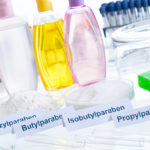
Beauty at what price?
That new lotion you just bought smells so delicious, it couldn’t be hiding toxins in there, could it? Unfortunately, many of the lotions and potions we use every day contain chemicals that are allowed in the United States, but it doesn’t mean they are good for you. Many chemicals that are legal here, are illegal in European countries. Conversely, chemicals that are not allowed in the US are found in European countries. How do we know what is a toxin and what is safe?
While certain additives in products may cause allergies, asthma or even cancer, pinning down which exact ingredient is damaging is difficult. Hard evidence on the dangers of chemical ingredients is so challenging because the data comes from observational studies, and each person’s exposure and risk varies greatly.
Burden on the Public
According to Russ Hauser, Chair of the Department of Environmental Health at Harvard T.H. Chan School of Public Health, “Too much of the burden is on the public, and it’s unfair to expect the average person to have the time and scientific background to stay on top of this.”
Parabens and phthalates, chemicals often found in nail polishes and lotions, are thought to disrupt the hormonal system, affecting many of our bodily systems, including the reproductive and neurological systems. Studies have shown a possible link between talc and ovarian cancer. So how do we avoid these chemicals? One study by the TH Chan School of Public Health suggested that purchasing products with fewer ingredients was one possible method of reducing your exposure to toxins. But words like “possible” and “potential” don’t help a lot when you are standing in a store, trying to decide which product is “safe” to purchase.
Where to Go for Help
The Environmental Working Group is a good place to start to learn a little more about the chemicals around us. According to their mission statement, they are “a non-profit, non-partisan organization dedicated to protecting human health and the environment.” Their website features consumer guides on beauty products, home care products, food, and water safety. They also have a data base of various beauty products that are rated for safety based on the ingredient list. You can type in the name of a product, or an ingredient to learn how safe it is. If you find it to be too toxic for you, use their data base to find alternative products that contain less toxins.
Another great option is to look into making one or two of your own beauty products. Making soaps, lotions and lip balms are very do-able in a standard kitchen. Finding how-to videos and recipes, like this one, is easy to do.
In short, learning which products to use does require a bit of time, but by learning companies that place a priority on healthy products, and/or making your own products, consumers send a message with their checkbooks. Hopefully more companies will start listening to the message we are sending.





